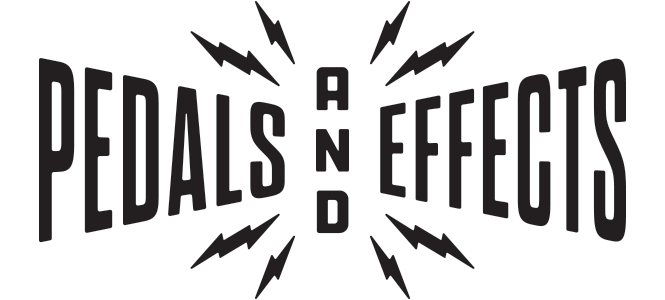Pedals And Effects Song Dissection: Kashmir by Led Zeppelin
/Today's Pedals And Effects Song Dissection is nothing short of legendary! Every single member of Led Zeppelin were innovators of their instrument, having blazed a trail for musicians to follow and cementing their legacy in the upper echelon of musical history. Both Jimmy Page and John Paul Jones are known for their creative sounds on guitar and bass respectively. Jimmy Page used pedals sparingly, not exactly commanding a huge pedalboard. Jimmy Page really only used fuzz, a wah pedal and an Echoplex tape delay for his theremin (and don't forget his violin bow solos!). All things considered for only using three or four effects, Jimmy Page revolutionized how the guitar is approached as an instrument. The same goes for John Paul Jones. Not only a bass wizard, being the multi-instrumentalist he is, he applied a very wet flanger to his keys in the song "No Quarter." All this at a time when straightforward Rhodes and Organs were commonplace, and effects weren't readily available or accessible for keyboards.
One thing we seldom talk about here at Pedals And Effects are effects on drum kits! And that is what today's Song Dissection is all about! Our disclaimer: some bands/artists are very protective about their sonic secrets so these dissections are based solely on our own knowledge of the capabilities of effects pedals, a little internet research, and of course the songs themselves. So let's not delay as we take a look at John Bonham's huge drum sound in the song "Kashmir" from their 1975 double album Physical Graffiti.
Effects on drums aren't something that is toted or wildly talked about, but it's something that everyone at one point has heard. You may not consciously be aware of it, but it's there. While mainly done in post-production, some bands and artists will run their drum mics through effects before going back to the front of house and out through the PA. Often heard with echo, or delay, lots of reggae and dub artists like to heavily affect their drums. In the case of Led Zeppelin's John Bonham, his drums would sometimes have subtle flange or was very heavily phased out. In Kashmir, the song starts off with Bonham's enormous driving drum sound, but if you pay close attention there is a very subtle rising and falling circular phase to his kit adding to his already larger than life sound.
This sound was achieved by running his drum mics into an Eventide Clockworks PS101 Instant Phaser. The Eventide PS101 is a rack mounted phaser that you can run XLR (mic) cables through in addition to your standard 1/4' instrument cable. The PS101 has simple envelope controls as well as the ability to switch between oscillation and envelope phases. You can achieve a similar effect if you have your mic placement "out of phase" in stereo when recording, or you could achieve a lo-fi version by running XLR/1/4' converters into effects pedals such a MXR Phase 90.
In the case of "Kashmir" the very subtle phase adds a lot of character to complement Bonham's legendary playing. The phase would envelope his machine gun snare drumming adding more depth and dynamics! While mainly used in the studio, Bonham would also employ the PS101 for his lengthy (often 20 minute long) drum solos and live for the song "In the Evening."
Adding effects to instruments that aren't normally associated with them is a great way of breaking the status quo and pushing sonic innovation as Led Zeppelin did. Really dissecting a bands or artists sound is a good way to attempt to figure out their songwriting mentality, and applying it to your own. This process, when done with multiple artists, bands, or sounds that you enjoy really informs a uniqueness exclusive to your style, and no one else.
Happy sound hunting!
-Max










